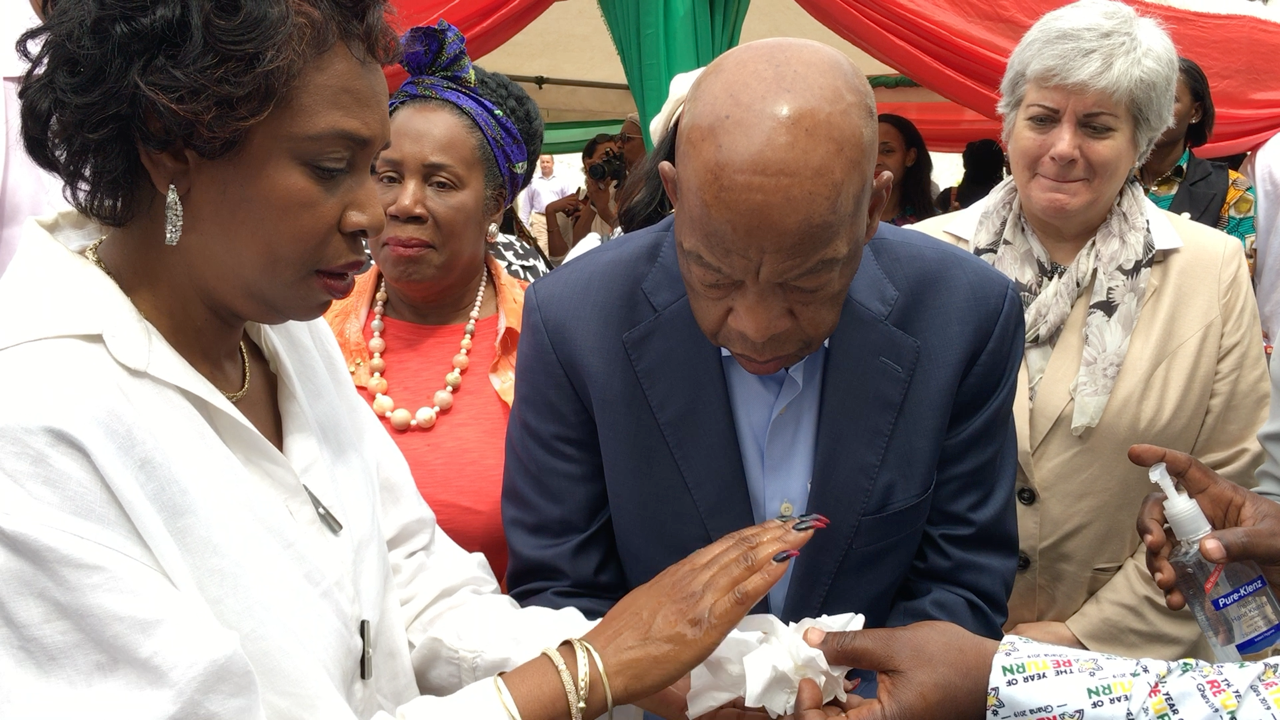Most members of the U.S congressional delegation that visited Ghana this week reportedly wept after touring slave castles in central part of the country.
The speaker of United States congress, Nancy Pelosi on Sunday arrived in Accra leading the delegation of American lawmakers to Ghana.
Pelosi led the congressional delegation to the Cape Coast and Elmina Castles on Tuesday.
The delegation visited the “Door of No Return” as they participate in the Year of Return activities.
The Year of Return activity is offering Africans in the Diaspora the chance to return to the continent and reconnect.

It has been 400 years after the first set of slaves left the shores of Africa to the USA.
A member of the congressional delegation, civil rights activist, John Lewis revealed that the experience for many of them during the tour of the castles was devastating.
Sadness on faces
Lewis who first visited Ghana in 1964 said he “wept” after seeing what happened to his “ancestors” who were sent into slavery.

Africa Feeds understands most members of the delegation also wept after being led through some of the dungeons in the two castles.
At the Elmina and Cape Castles, the delegation had the chance to enter the dungeons and cells where the slaves captured were kept.

There was also a tour through the “Door of No Return” which was the final exit for those being shipped across the Atlantic to the United States of America.
Lewis said the world must come together to ensure that what happened to Africans when they were taken into slavery against their will “never happens again”.

The delegation will end its visit in Ghana on Wednesday.
Speaker Pelosi will also address Ghana’s parliament on Wednesday, becoming the first US speaker to do so.
She said earlier that “It is a special honor to be the first U.S. Speaker of the House to address the illustrious Parliament of Ghana, as we build on the partnership between our nations.”

Abolishment of slave trade
The slave trade was established as early as the mid-17th century.
Trading ships would set sail from Europe with a cargo of manufactured goods to the west coast of Africa.
Britain outlawed slavery in 1833 but it was abolished in the USA after the defeat of the Confederacy in the Civil War in 1865.
Despite that the transatlantic trade in African slaves continued. The main market for the slaves was Brazil, where slavery was not abolished until 1888.
The Atlantic slave trade or transatlantic slave trade involved the transportation by slave traders of enslaved African people, mainly to the Americas.

(Photo by Ann Ronan Pictures/Print Collector/Getty Images)
The last slave ship
Importation of slaves was banned in the United States in 1808. But smugglers used ships like Clotilda recently discovered to still carry people in chains.
In 1860, the wooden Clotilda illegally transported 110 people from the now known west African nation of Benin to Mobile, Alabama.
The slaves that were on the ship were freed and settled in a community that’s still called Africatown USA.
Source: Africafeeds.com


